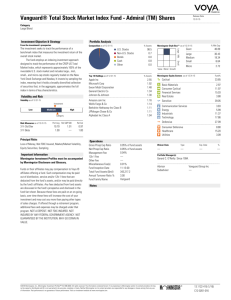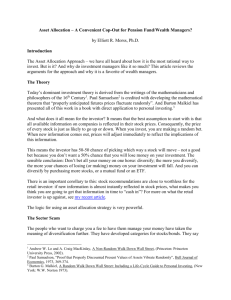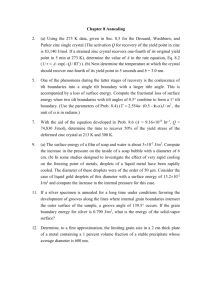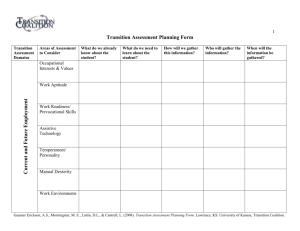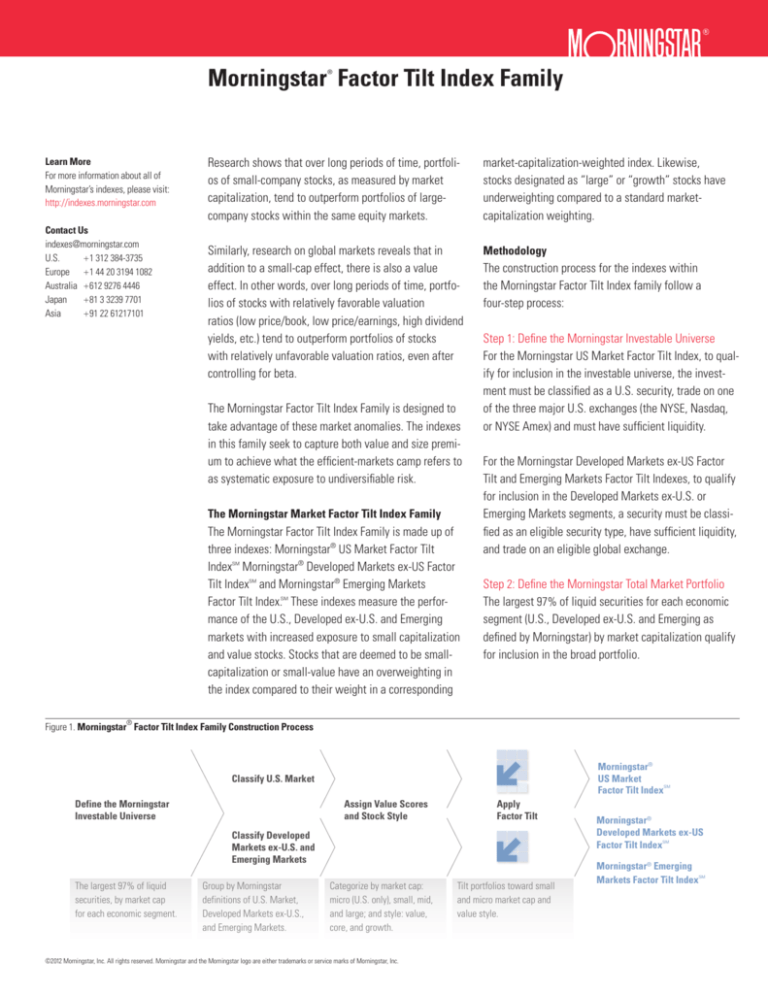
Morningstar Factor Tilt Index Family
®
Learn More
For more information about all of
Morningstar’s indexes, please visit:
http://indexes.morningstar.com
Contact Us
indexes@morningstar.com
U.S. 11 312 384-3735
Europe 11 44 20 3194 1082
Australia 1612 9276 4446
Japan 181 3 3239 7701
Asia 191 22 61217101
Research shows that over long periods of time, portfolios of small-company stocks, as measured by market
capitalization, tend to outperform portfolios of largecompany stocks within the same equity markets.
market-capitalization-weighted index. Likewise,
stocks designated as “large” or “growth” stocks have
underweighting compared to a standard marketcapitalization weighting.
Similarly, research on global markets reveals that in
addition to a small-cap effect, there is also a value
effect. In other words, over long periods of time, portfolios of stocks with relatively favorable valuation
ratios (low price/book, low price/earnings, high dividend
yields, etc.) tend to outperform portfolios of stocks
with relatively unfavorable valuation ratios, even after
controlling for beta.
Methodology
The Morningstar Factor Tilt Index Family is designed to
take advantage of these market anomalies. The indexes
in this family seek to capture both value and size premium to achieve what the efficient-markets camp refers to
as systematic exposure to undiversifiable risk.
The Morningstar Market Factor Tilt Index Family
The Morningstar Factor Tilt Index Family is made up of
three indexes: Morningstar® US Market Factor Tilt
Index Morningstar® Developed Markets ex-US Factor
Tilt Index and Morningstar® Emerging Markets
Factor
Tilt Index.
These
measure
the perforMorningstar Developed & Emerging
Markets
Factor Tilt
Indexindexes
Construction
Process
mance of the U.S., Developed ex-U.S. and Emerging
markets with increased exposure to small capitalization
and value stocks. Stocks that are deemed to be smallcapitalization or small-value have an overweighting in
the index compared to their weight in a corresponding
The construction process for the indexes within
the Morningstar Factor Tilt Index family follow a
four-step process:
Step 1: Define the Morningstar Investable Universe
For the Morningstar US Market Factor Tilt Index, to qualify for inclusion in the investable universe, the investment must be classified as a U.S. security, trade on one
of the three major U.S. exchanges (the NYSE, Nasdaq,
or NYSE Amex) and must have sufficient liquidity.
For the Morningstar Developed Markets ex-US Factor
Tilt and Emerging Markets Factor Tilt Indexes, to qualify
for inclusion in the Developed Markets ex-U.S. or
Emerging Markets segments, a security must be classified as an eligible security type, have sufficient liquidity,
and trade on an eligible global exchange.
SM
SM
SM
Step 2: Define the Morningstar Total Market Portfolio
The largest 97% of liquid securities for each economic
segment (U.S., Developed ex-U.S. and Emerging as
defined by Morningstar) by market capitalization qualify
for inclusion in the broad portfolio.
®
Figure 1. Morningstar Factor Tilt Index Family Construction Process
Morningstar®
US Market
Factor Tilt IndexSM
Classify U.S. Market
Assign Value Scores
and Stock Style
Define the Morningstar
Investable Universe
Apply
Factor Tilt
Classify Developed
Markets ex-U.S. and
Emerging Markets
The largest 97% of liquid
securities, by market cap
for each economic segment.
Group by Morningstar
definitions of U.S. Market,
Developed Markets ex-U.S.,
and Emerging Markets.
Categorize by market cap:
micro (U.S. only), small, mid,
and large; and style: value,
core, and growth.
©2012 Morningstar, Inc. All rights reserved. Morningstar and the Morningstar logo are either trademarks or service marks of Morningstar, Inc.
Tilt portfolios toward small
and micro market cap and
value style.
Morningstar®
Developed Markets ex-US
Factor Tilt IndexSM
Morningstar® Emerging
Markets Factor Tilt IndexSM
Morningstar® Factor Tilt Index Family
The portfolios are then broken down into three (or four
for US Market Factor Tilt) cap indexes using the following guidelines:
of settings to use for the tilting parameters, we first created 25 portfolios by using values of 0.1, 0.2, 0.3, 0.4,
and 0.5 for each of two parameters.
3 The Large Cap Index is constructed by selecting the
largest stocks that comprise 70% of market capitalization of the investable universe.
3 The Mid Cap Index represents the next largest stocks
that comprise 20% of market capitalization of the
investable universe.
3 The Small Cap Index represents the next largest stocks
that comprise 7% of the market capitalization of the
investable universe.
3 The Micro Cap Index is used for in the construction of
the Morningstar US Market Factor Tilt Index only.
The Micro Cap Index represents the next largest stocks
that comprise 2.5% of the market capitalization of the
investable universe.
The Fama-French three factor (FF) model is then used to
guide us toward one of these 25 portfolios to use.
(See Fama and French 1993, 1995, and 1996.) (The three
factors of the FF model are the excess return on the
market portfolio; SMB, which is the difference between
the returns of a small-cap and a large-cap portfolio;
and HML, which is the difference in returns between a
high book/market and low book/market portfolio.)
The size tilt factors, value tilt factors, and FF regression
coefficients were set as follows:
Step 3: Assign Value Scores and Stock Style
A stock’s value orientation reflects the price investors
are willing to pay for a share of some combination of
the stock’s prospective earnings, dividends, sales, cash
flow, and book value. Value orientation is determined
using the following steps:
3 Calculate five prospective yields (earnings, dividend,
cash flow, revenue, and book value) for each stock within each of the cap indexes.
3 Compute an aggregate value score for each security by
averaging the scores of the five prospective yields.
These average scores are then used to assign the stocks
within each size band to the size band’s value, core, and
growth indexes.
3 Index constituents are assigned so that within each of
the large-cap, mid-cap, small-cap and micro-cap (US
Markets Factor Tilt Index only) size bands, the three indexes that reflect each of the three levels of value orientation account for roughly a third of the total float-adjusted market capitalization of the size band.
Step 4: Apply Factor Tilt
Morningstar developed a model that sets separate degrees of value tilting and size tilting, each on a scale
from 0 (no tilt) to 1 (full tilt). To select which combination
©2012 Morningstar, Inc. All rights reserved. Morningstar and the Morningstar logo are either trademarks or service marks of Morningstar, Inc.
Fama-French Coefficients
Index
Size
Tilt
Factor
Tilt
SME
HMV
History
(Years)
US Market Factor Tilt
0.4
0.1
0.18
0.23
14+
Developed ex-US
& Emerging Markets
Factor Tilt
0.2
0.1
0.14
0.21
11+
At each reconstitution, the Morningstar Index Committee reviews the long-term sensitivities of the candidate
portfolios to value and size factors, using at least in
part the FF model to ensure the tilt factors continue to
be appropriate.
Constituent Weight Calculation
Each index constituent is weighted according to its modified free float value, which is the product of free
float shares, the most recently traded price of the security and a weight adjustment factor. While the modified
free float value is calculated continually for each
index constituent, the free float shares of each potential
constituent is only calculated at each rebalancing.
Adjustment factors for each constituent are calculated
at each reconstitution.
Rebalancing and Reconstitution
Morningstar Indexes in the Factor Tilt Index Family are
rebalanced —i.e. the security weights (the product of
the number of free float shares and the indicated dividend per share of each constituent) are adjusted—four
times annually. The index is reconstituted—i.e., the index membership is reset—twice annually.

